The 10 Best Email Automation Software Tools in 2021
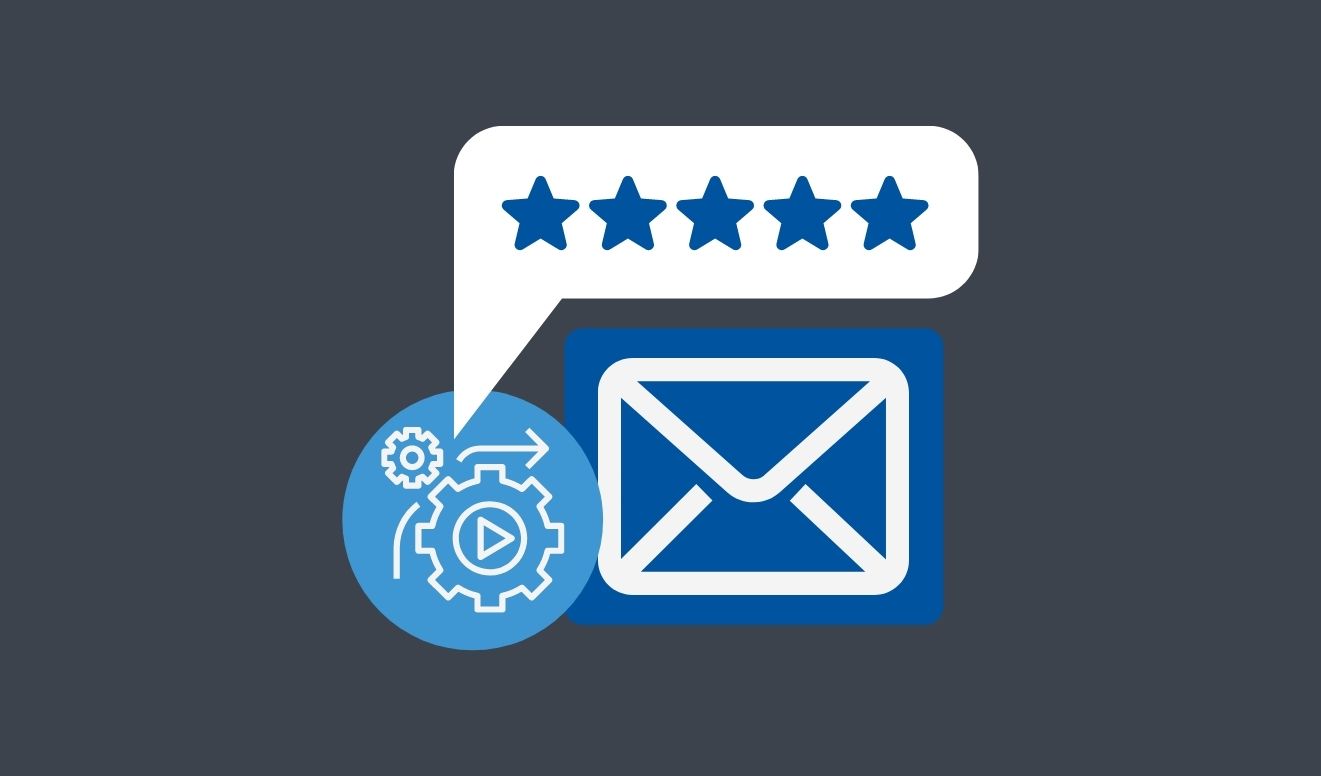
Your mailing list is growing and filling with leads who've opted to receive your messaging. They’re ready to hear what you have to say, but manually sending personalized emails is time-consuming and makes it impossible to scale. Most businesses don't have the time or resources to keep up with manual engagement, so investing in an effective email automation tool is essential.
But with hundreds of email automation tools on the market, how can you choose the best one? This guide will provide everything you need to know in order to make an informed choice for your business.
With our help, you’ll be well placed to select email automation software that will allow you to:
Integrate with your current CRM, making it easier for IT to maintain systems and ensure software is running smoothly.
Reduce time manually crafting and sending emails.
Easily create email campaigns without any complicated coding.
Target your prospects with relevant content based on list segmentation.
Collect valuable data through campaign reporting.
We've got ten great options that will help you reach your marketing goals in 2021.
Want to make sure your data is clean and ready for an automation tool? Request your free data check today.
What is email automation software?
Email automation software is a digital tool that enables you to craft and automate email campaigns to your subscribers based on a set of triggers or actions. Once built, these automated campaigns can move your contacts through the sales funnel without any manual intervention needed.
Email marketing has an average ROI of 42:1, so email campaigns are hugely effective when done strategically. Email automation software will allow you to maximize the ROI of your email marketing spend by:
- Increasing communication and engagement with contacts to keep your brand top-of-mind.
- Segmenting lists to ensure you’re targeting contacts with relevant content.
- Providing thorough reporting and analytics to help you identify which campaigns are working and where to best leverage your future investment.
- Freeing you up to spend less time manually engaging with contacts so you’re able to focus elsewhere.
- Ensuring your emails reach contact inboxes instead of going to spam.
Related post: 14 smart email marketing automation examples to inspire your workflow. Check out the most effective email triggers—the best email automation examples that will give your campaigns a major boost and reduce your workload.
What to look for in software for email automation?
There's no shortage of email automation tools available, so how do you know which is the best one? A quick google search can lead you down a rabbit hole of pouring over reviews without knowing what you're actually looking for. When choosing the software you want to invest in, here are some of the most important features to look for:
1. Drag-and-drop editor
One of the first features you should look for in automation software is a drag-and-drop editor. This powerful tool enables you to easily create attractive email campaigns by simply dragging and dropping different content blocks where you want them.
You can also use the editor to customize each element's colors, fonts, size, and style. It gives you the flexibility to customize template designs to look how you want them to without any complex coding knowledge required.
2. Ready-made templates
Creating emails from scratch, even with drag-and-drop editors, can be very time-consuming. Look for software that offers a wide range of templates to work from which you can modify based on your branding. Some email marketing tools even come with a database of marketing funnel templates, which you can sort by your campaign goals.
While you still need to write the content for your campaigns and add your own images, these templates will give you prompts that make it easier to craft your content. It's handy for those who are unfamiliar with creating funnels and don't know where to start.
3. Ease of use
The point of email marketing automation is to make your life easier. Spending hours digesting training materials on how to use your software and fiddling with complex campaign creation options defies the point of your investment.
The easier it is to use the software, the more willing your staff will be to adopt it. Additionally, if your team isn't super tech-savvy or familiar with digital design, it can be extremely frustrating to navigate complex email automation tools.
Look for software that is as simple as possible but still ticks all your boxes in terms of required features.
4. Deliverability
It's no use spending time and resources crafting email campaigns if your contacts will never even see them. Just because you send out an email blast doesn't mean that your contacts will open them or that they will even reach their inboxes. Contact databases are often unstandardized and full of incorrect information.
Invalid email addresses and typos can cause your emails to bounce, go to spam, and reduce your credibility as a brand. If you continue sending emails to unclean lists, you will start to reduce your domain authority, and once you do, it's hard to recover. The first step is to practice email list hygiene.
That means working with a clean list and using data quality tools to standardize your database and remove invalid contacts. Data cleaning steps include removing duplicates, standardizing formats, and correcting obvious typos.
On top of that, you want to choose an email automation software that supports high deliverability rates by:
- Flagging emails that bounce.
- Managing IP reputation.
- Monitoring blacklists.
- Removing invalid emails.
All marketers want 100% of their emails to reach their contacts but that's nearly impossible, even with a good marketing automation platform. You should be aiming for a deliverability rate of around 95%, with a bounce rate of less than 3%.
5. Automated email workflow and scheduling features
Some tools enable you to craft email campaigns and send them out to your database, but one-off emails are not enough to convert leads into customers. The email automation software you choose should enable you to set up automated email workflows that move your contacts through a funnel based on how they interact with your content and specific actions that they take.
When you set up these workflows, you get to set the enrollment criteria for each one. The enrollment criteria is the action or trigger that needs to occur for a contact to enter into the workflow. Once they do, they will continue to receive the rest of your workflow's content at a rate decided on by you.
Additionally, it is also useful to have scheduling features to send out email campaigns on specific dates and times. You can build the campaigns in advance and schedule them to send on the day that you specify.
6. List segmentation
According to MailChimp, segmented email campaigns receive 100.95% more click-throughs than non-segmented ones. To make sure that you're sending relevant content to the right people, your email automation software should have advanced segmentation features that allow you to build lists based on various characteristics. These might include:
- Engagement with your brand and content.
- Interests.
- Demographics.
- Purchasing behavior.
- And other custom fields related to your business.
Sending highly targeted emails to recipients on your list will increase open rate, click-through rate, and overall conversions.
7. Analytics and reporting
The more data you can get from your campaigns, the better equipped you are to boost their effectiveness. Each time your software sends out an email, it will track a variety of stats. The more tracking capabilities that your chosen software has, the better.
You can use this data to determine which portions of your campaigns are performing successfully and which could use some work. This might include certain subject lines that perform better than others or CTAs that work more effectively. The most important metrics to track include:
- Opens
- Click-throughs
- Conversions (sign-ups, purchases)
- Bounces
- Unsubscribes
- Spam complaints
- Mobile opens
- Mobile click-throughs
- The efficiency of an entire workflow or sequence of emails
The ideal email automation software will track your leads, even once they click on one of the links in your email. It can determine which actions they take as a result, such as where they browse on your website or if they make a purchase.
8. A/B testing
Just as advanced analytics can help you boost the effectiveness of your campaigns, so can A/B testing. A/B testing features will allow you to send out multiple emails with slight differences, such as using different fonts, color palettes, CTA buttons, content positioning, etc., and compare the effectiveness of each.
A/B testing is the best way to understand your audience and what they’re responding well to in your email marketing campaigns - and what they’re not. You can use this information to craft your future campaigns more strategically to improve your conversion rates.
9. Integrations
You're likely already using multiple forms of software to run your business. You might be using eCommerce platforms like Shopify or Woocommerce, for example. Or you may have a customer database software to organize your contacts. You’re no doubt using social media to push out content and engage with your audience.
Regardless of what software you currently use, they all contain valuable data you can leverage in your automated email campaigns. Many email automation tools offer integrations with the software you're already using, allowing you to streamline your marketing processes.
Some of the most useful integrations to look for include:
- ESPs (Gmail, Outlook, Yahoo)
- Zapier
- Woocommerce
- Shopify
- Customer relationship management software
- Social media
- Stock photo apps (Shutterstock)
- Ticketing platforms
The best integrations for you will depend on what software you are already using in your business or software you'd like to use in the future.
10. Subscriber and volume support
Another critical aspect you'll want to consider when choosing an email automation software is the number of subscribers it can support. You'll notice that many email automation tools will offer a free version but will only allow limited subscriber volume and a limited number of emails per month.
It might be that these limits are ok for you to start with and sufficient to cover your current subscriber base or email volume. But it's also important to consider how those needs will change as you continue to grow and scale so you can choose a platform that can grow with you.
11. Customer Support
The last thing to look for when choosing your software is the customer support offered by the brand. The software should provide training documents and videos that can help you train staff on how to use the software effectively. Having a customer service team available 24/7 for queries will also be vital, especially as you and your team get familiar with the software.
Get instant access to a powerful welcome email sequence swipe file as part of our free email list bundle. Download the bundle for free to start engaging and nurturing your list today!
The best email marketing automation software
Now that you have a better idea of what to look for let's look at ten different email marketing software tools that will help you automate your campaigns, starting with a handy guide to pricing:
Platform | Pricing | Free plan available? |
|---|---|---|
Sendinblue | Starts at $25 per month | Yes |
Omnisend | Starts at $16 per month | Yes (no automation) |
MailChimp | Starts at $9.99 per month | Yes |
Pardot | Starts at $1250 per month | No |
GetResponse | Starts at $15 per month | No (free trial available) |
MailerLite | Starts at $10 per month | Yes |
ActiveCampaign | Starts at $9 per month | No |
Marketo | Pricing based on database size | No |
Campaign Monitor | Starts at $9 per month | No |
HubSpot | Starts at $800 per month for professional package | Yes |
1. Sendinblue – the best budget-friendly software
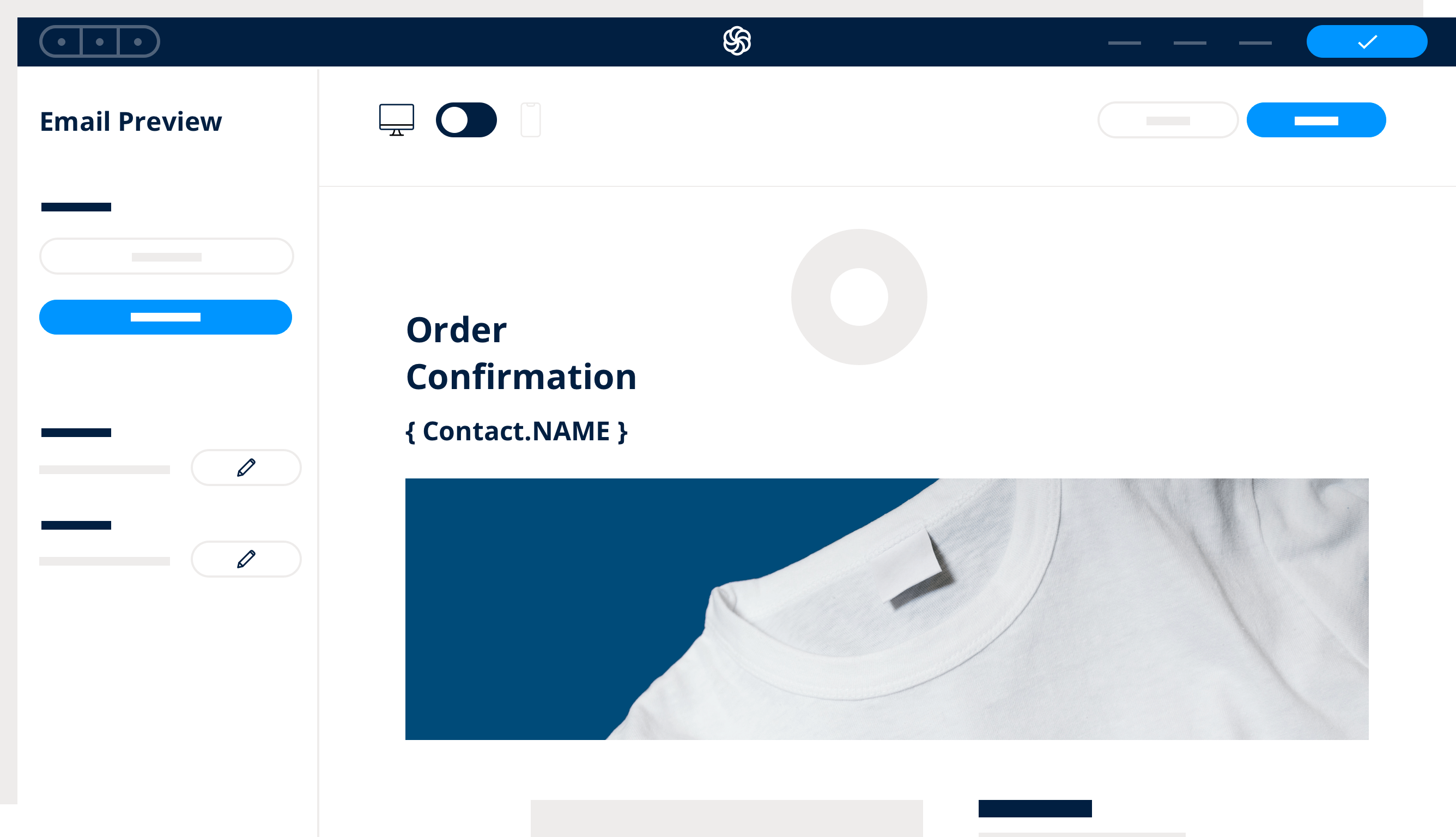
Sendinblue is an email marketing software that also serves as a CRM and allows you to create landing pages. It has more than 70 highly responsive templates that you can use to craft various email marketing campaigns and workflows. You can preview your campaigns on different screen types to see how it's going to look on mobile, tablet, and computer to make sure the design flows.
In the tool's workflow management section, you can customize the entry points to each workflow based on various triggers like contact details, email engagement (i.e., actions taken within an email), and website activity.
It has tons of API integrations, including Shopify, Woocommerce, Elementor, Optinmonster, Typeform, PayPal, and more. You can also use the A/B testing features in the software to test out different email formats and see which is most effective.
It has a free plan, which allows you to have unlimited contacts but only send out 300 emails per day. The next step up is the Lite plan, which starts at $25 per month and allows you to send out 10,000 emails per month with no daily sending limit. For startups or businesses with a tight marketing budget, Sendinblue is the best value for money.
2 .Omnisend – the best for eCommerce
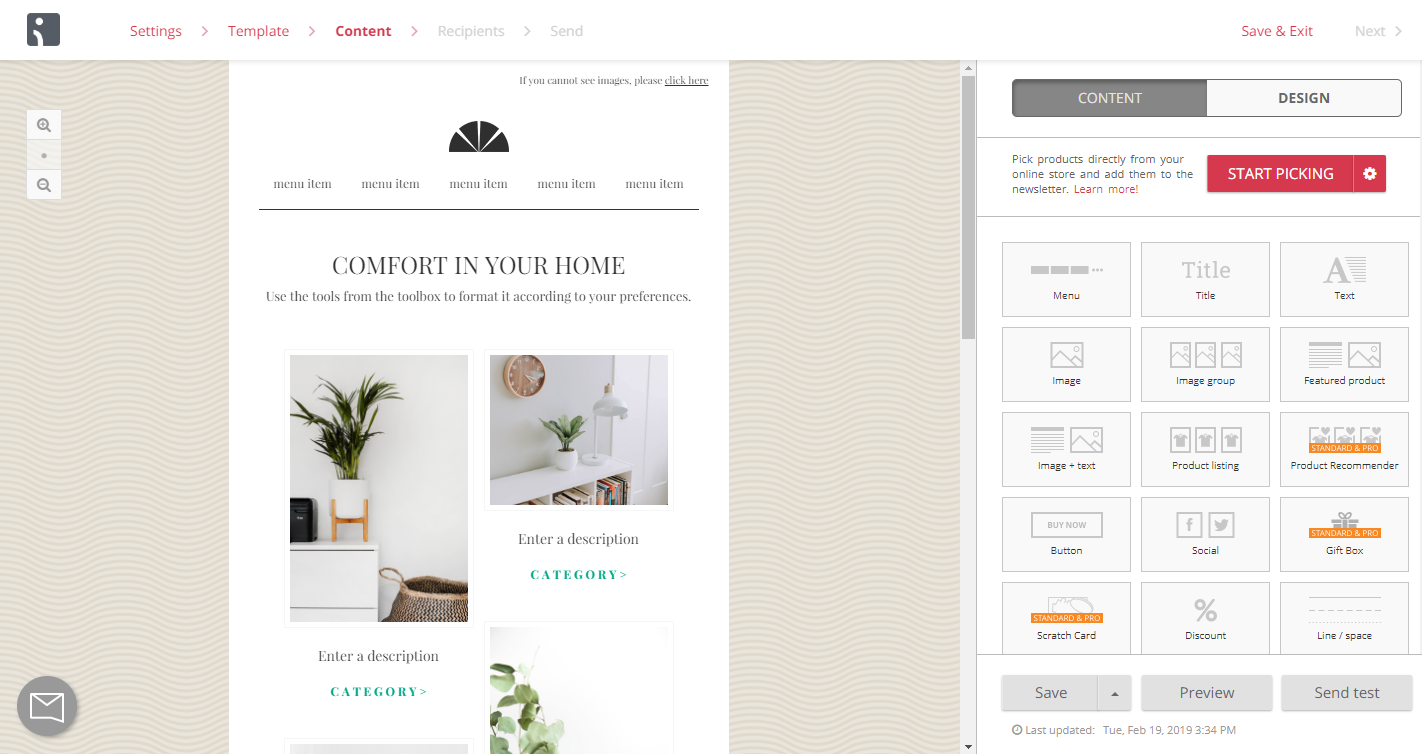
If you run an eCommerce business, then Omnisend is going to be a great email automation option. Its integrations allow you to connect all the moving parts of your online shop directly to your email automation software. It has integration with just about every eCommerce platform out there, including BigCommerce, Shopify, and Magento.
Plus, it integrates with shipping software like ShipStation, Easyship, and Aftership. You can also integrate it with loyalty and review platforms like Smile.io and Yotpo.
Their database of templates is designed specifically with eCommerce in mind, with optimization to encourage repeat business and minimize cart abandonment. It also has a feature called the Product Picker, enabling you to access your entire product list and choose which to feature in your campaigns. Omnisend allows you to add multiple different channels within the same workflow, including SMS, email, push notification, and even Facebook messenger, which sets it apart from others.
There’s a free plan available, but it doesn't have any automation features. The standard plan starts at $16 per month, which gives you 15,000 emails plus email automation. Still, you'll have to upgrade if you want access to advanced reports, push notifications, and deliverability support.
3. Mailchimp – the most integrations

Mailchimp is one of the most powerful email automation tools available and also the most popular. You can easily import contact lists into the software from one of its many integrations and also segment your lists based on a comprehensive set of filters, as well as design email campaigns in the content manager. Transactional emails like welcome emails, one-off email blasts, and automated campaigns can be easily set up using its templates, but MailChimp also enables people with more tech experience to code emails.
MailChimp has over 200 integrations, more than almost any other email automation software available. While this could be beneficial to large corporations with big marketing teams, it's likely unnecessary for SMBs. Their help section has tons of training documents and webinars that walk you through exactly how to do everything in the software. It’s a very valuable resource for marketing teams who are new to email automation.
The free plan gives you up to 2000 contacts, and you get access to the CRM. The next step up is the Essentials plan, which starts at $9.99, and gives you 500 contacts with a monthly send limit of 10x your contact count. The price of the plan increases the more contacts you add, and you can add up to 50,000.
4. Pardot – best for Salesforce users

If you're currently using Salesforce as your CRM, then Pardot is the best email automation software to use. Pardot integrates with Salesforce as part of its marketing cloud. Both platforms are best suited to larger enterprises who want the capacity to scale and have the marketing budget to support that.
You can create dynamic drip email campaigns and monitor them using the Pardot Engagement Studio. Here, you can manage drip triggers, add/remove lists, change fields, and track metrics.
You can also connect Pardot directly to Salesforce and combine your campaigns so that everything is in one place. Not only does this help with organization, but it also improves your analytics and insights since you can see both marketing and sales data. The Einstein Analytics app in Pardot is one of the most in-depth reporting features you'll find, with a multi-touch attribution dashboard.
This lets you see how well your campaigns are creating brand awareness and how well they are converting. Pardot’s Growth package starts at $1250 and includes 10000 contacts, CRM integration, lead nurturing and lead scoring.
5. GetResponse – best social media integration
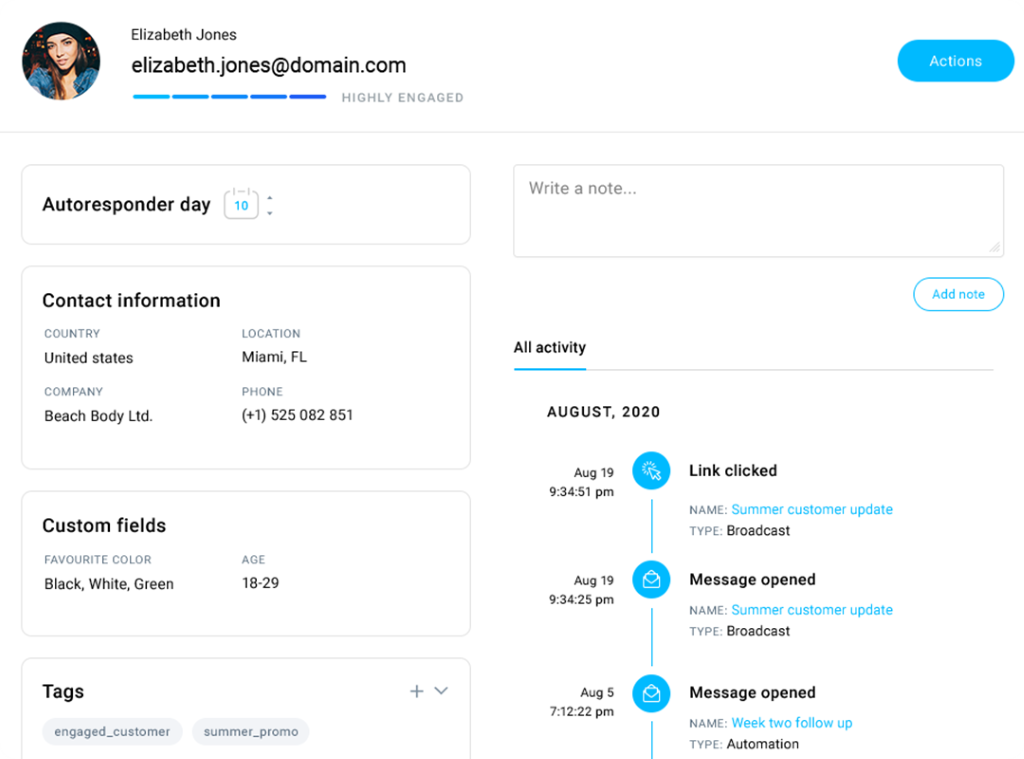
GetResponse is an all-in-one marketing tool that has strong integrations with major social media platforms like Facebook, LinkedIn, Twitter, and Pinterest. Using these integrations, you can add share buttons to your emails to encourage your recipients to share content and boost your engagement. Social share analytics enable you to track reactions to your emails and measure stats like likes, comments, and shares.
GetResponse is best suited to small businesses interested in developing a social presence or bloggers who don't need access to too many advanced marketing features. It's easy to use, with structured workflows that guide users through the campaign building process. You can also create landing pages on the platform with its drag-and-drop editor.
GetResponse has a 30-day free trial, and their Basic plan starts at $15 per month for up to 1000 contacts.
6. MailerLite – best UI

If you're new to email automation and looking for a simple tool that's intuitive and easy to use, the best fit for you could be MailerLite. The drag-and-drop email builder allows you to create fantastic email campaigns using one of their templates. It also has a rich text editor, and you can edit photos directly in the builder.
It has all the features you need to automate and manage your email marketing, including list segmentation, comprehensive reporting, and A/B split testing.
MailerLite is the best email automation software for beginners, and they have 24/7 customer support on hand to help with any issues.
The free plan has everything you need to get started and gives you up to 1000 contacts and 12000 emails per month. That said, the premium plan gives you access to the full spectrum of features with unlimited emails and starts from just $10 per month.
7. ActiveCampaign – best segmentation and lead scoring
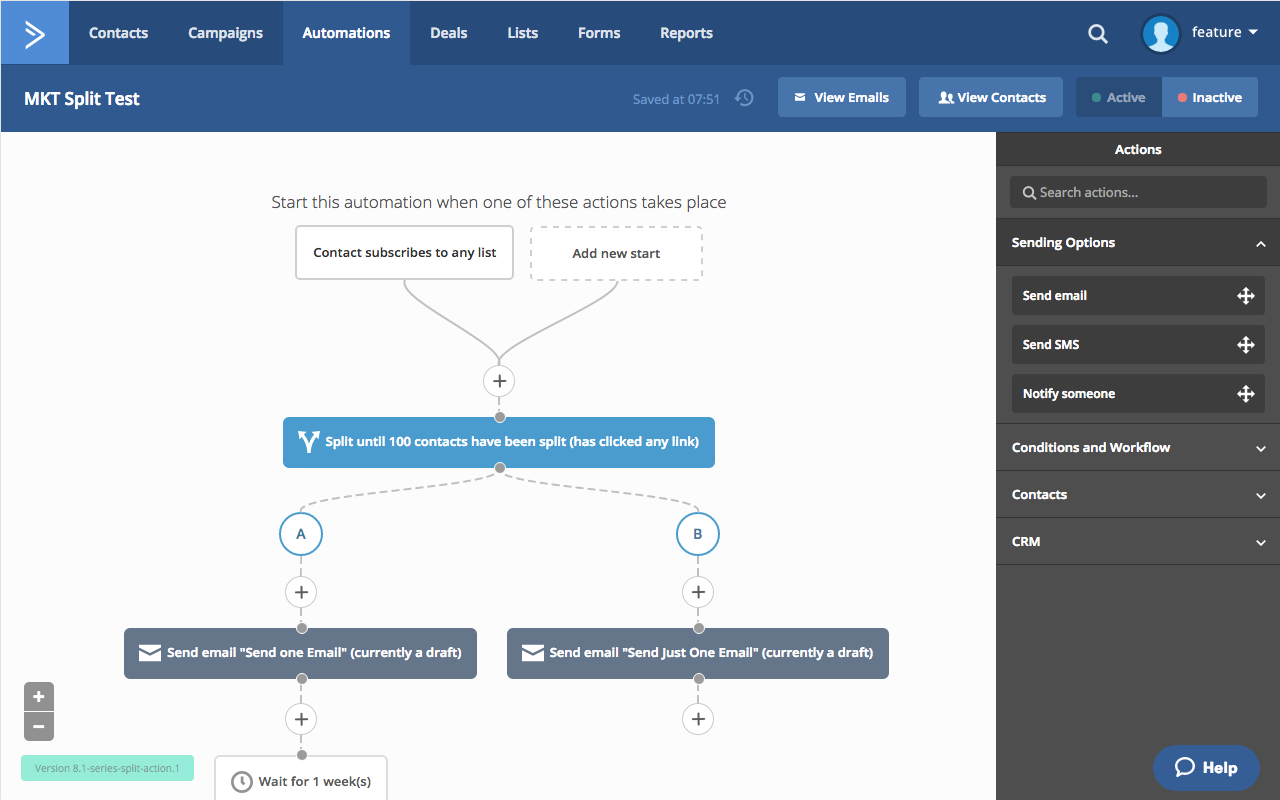
ActiveCampaign has some of the best list segmentation and customizable trigger settings available in email marketing software. You can create automated email workflows that trigger based on contact interests, location, website behavior, history, contact engagement, and more. The list segmentation in ActiveCampaign is very in-depth, allowing you to segment lists based on up to 20 conditions.
Some of these include organization, IP address, subscription date, total conversion value, name, and customizable tags.
ActiveCampaigns Lite plan starts at $9 per month for 500 contacts.
Related post: 10 simple email automation workflow examples you can incorporate today, from lead nurturing through to engagement, retention or re-engagement.
8. Marketo – best for enterprises/most scalable

Marketo is an enterprise-level marketing automation software for organizations who need the most powerful automation software available, with the most scaling potential. There isn't much of a learning curve, considering it's such a powerful tool, as the interface is very user-friendly. There are tons of email templates you can use to craft campaigns, premade forms, and landing pages.
Marketo also integrates with Salesforce, enabling corporations to compile their sales and marketing insights in one place.
Marketo doesn't have CRM features but offers integrations with various reputable CRMs like Netsuite, ZohoCRM, Pipeline, Microsoft Dynamics, and more. There are also limits in its reporting functionality, but it offers integrations with advanced analytics tools like Smartify, KISSmetrics, Segment.io, and Crazyegg.
Marketo’s pricing is based on database size but starts at $895 per month and goes up from there.
Leveraging #emailautomation will reduce time spent on manual tasks, but how do you know which software to choose? Check out this guide to the best email automation software and what to look for when choosing your perfect software:
9. Campaign Monitor – best reporting features

Campaign Monitor is an excellent choice for data-driven marketers who want access to in-depth reporting and analytics features. It's easy to access and review stats from your campaigns and export them in a PDF to send to clients. It also has A/B testing capabilities, although you can only compare two different versions against each other.
Campaign Monitor offers more than just basic autoresponders. You can set triggers for your drip campaigns such as link clicks, product purchases, page visits, and the opening of specific emails.
You can import HTML templates directly into the platform or use one of the 60 templates available on the platform. You can also upload your contact lists in various formats such as CSV, tab-delimited, Excel, among others.
Campaign Monitors Basic plan starts at $9 per month for 500 contacts, which allows you to send 2500 emails per month.
10. HubSpot – best all-in-one sales and marketing tool
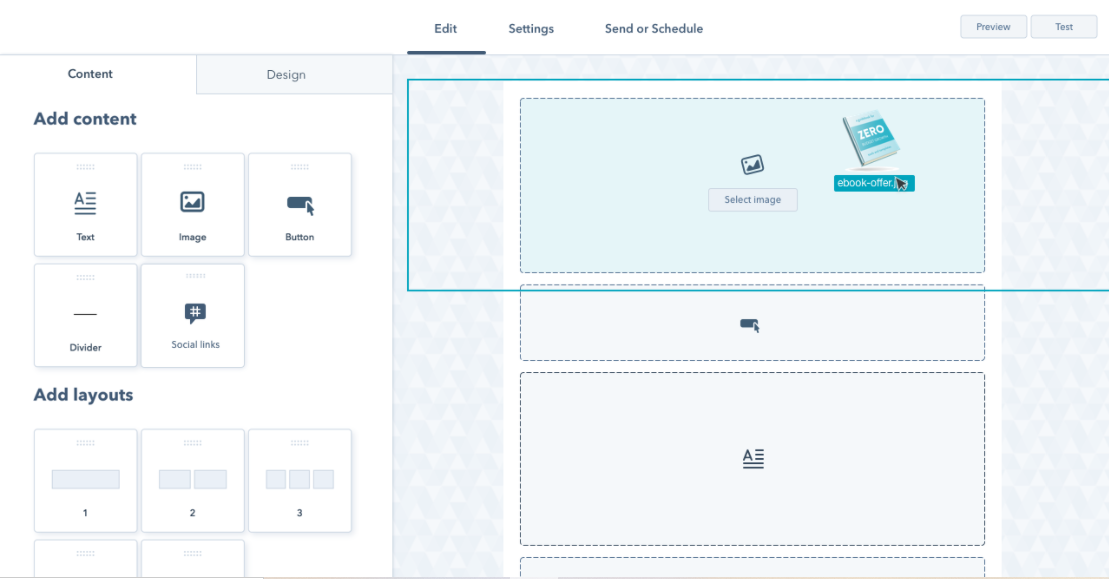
HubSpot is an all-in-one marketing platform that is more of a CRM with email marketing and automation features. You can use HubSpot as the hub for all your marketing efforts, enabling you to create professional email campaigns with a drag-and-drop builder, segment your lists in the CRM, and even do social media management.
Since the email automation software is part of HubSpot's fully integrated marketing platform, you can simultaneously build leads while also automatically nurturing the ones you already have. You can even use the software to automate other tasks beyond just email, such as lead scoring and data management.
You can use HubSpot for free and get 2000 emails per month, but you won’t have access to the email automation features. The professional plan allows you to create up to 300 automated workflows and starts at $800 per month.
The best email marketing automation tools
From free to high-budget and from simple to feature-rich, there’s email automation software to serve the needs of every business. If you're a small business or entrepreneur just getting started in the email marketing world, then Sendinblue or MailerLite are great places to start. For larger enterprises that need the capacity to scale, you might want to consider Marketo or Pardot.
Regardless of what you choose, it's essential that you include data cleaning tools as part of your marketing strategy. CRM data cleansing ensures that you always work with a clean contact database to maximize your campaign success.
Want to make sure your data is clean and ready for an automation tool? Request your free data check today.